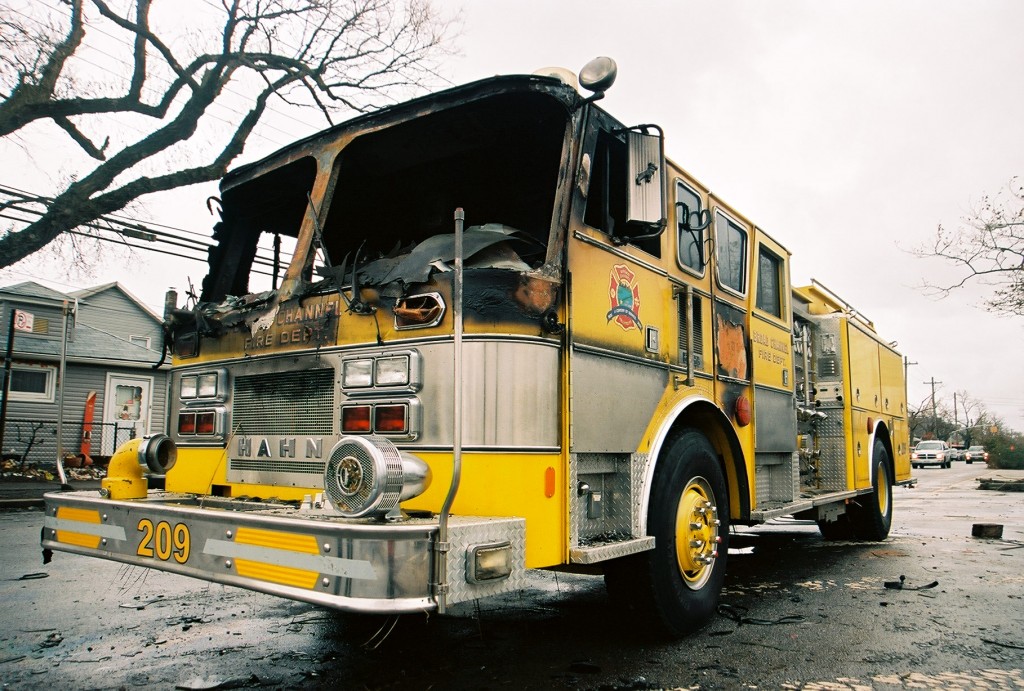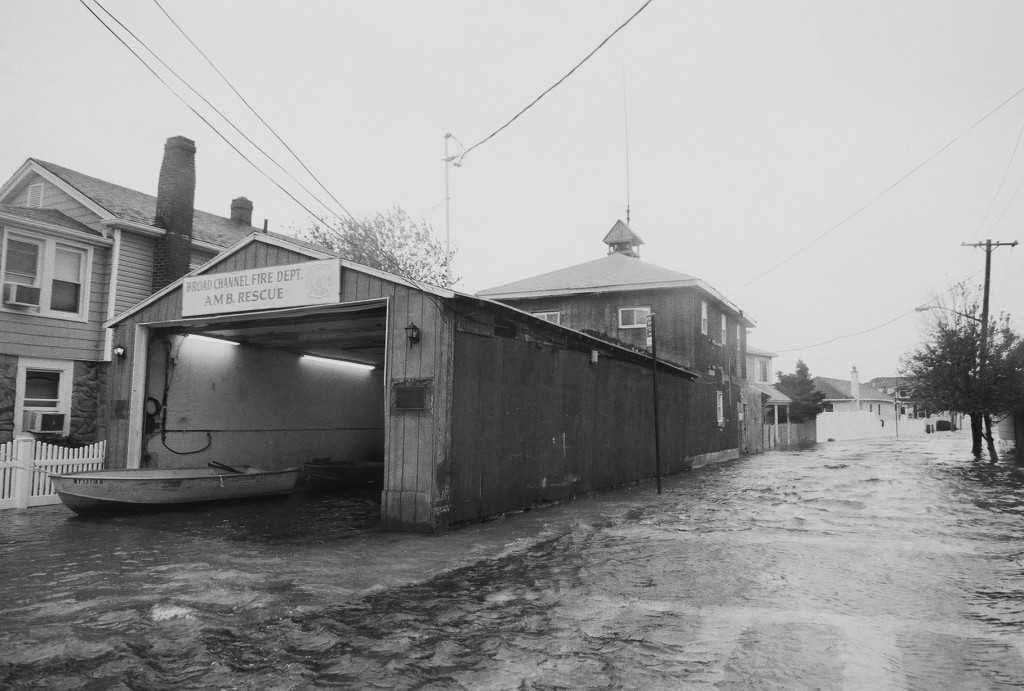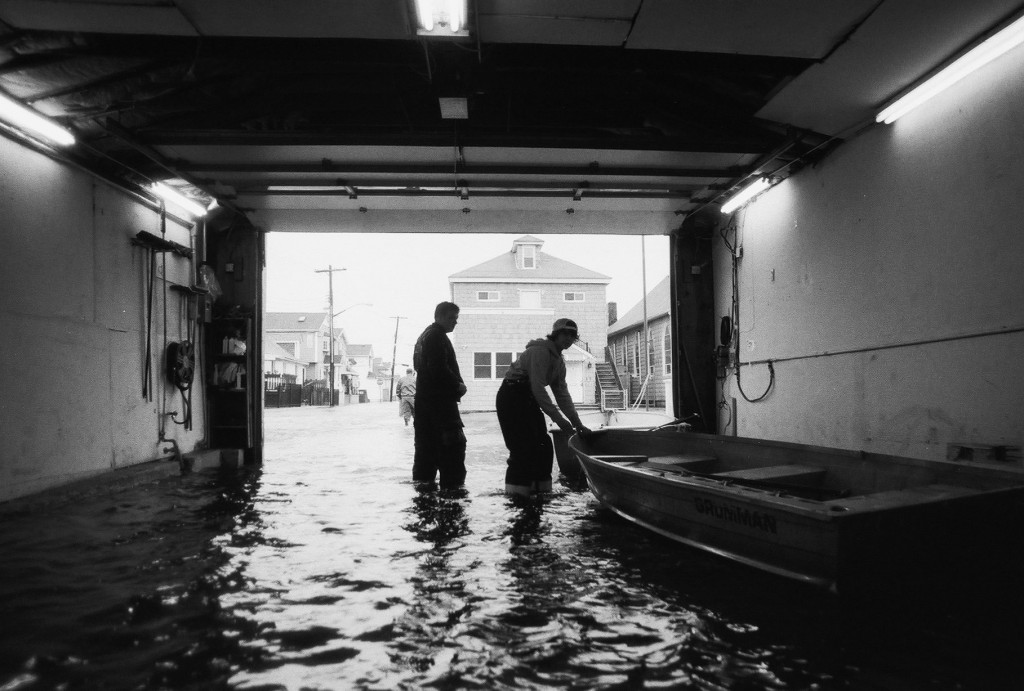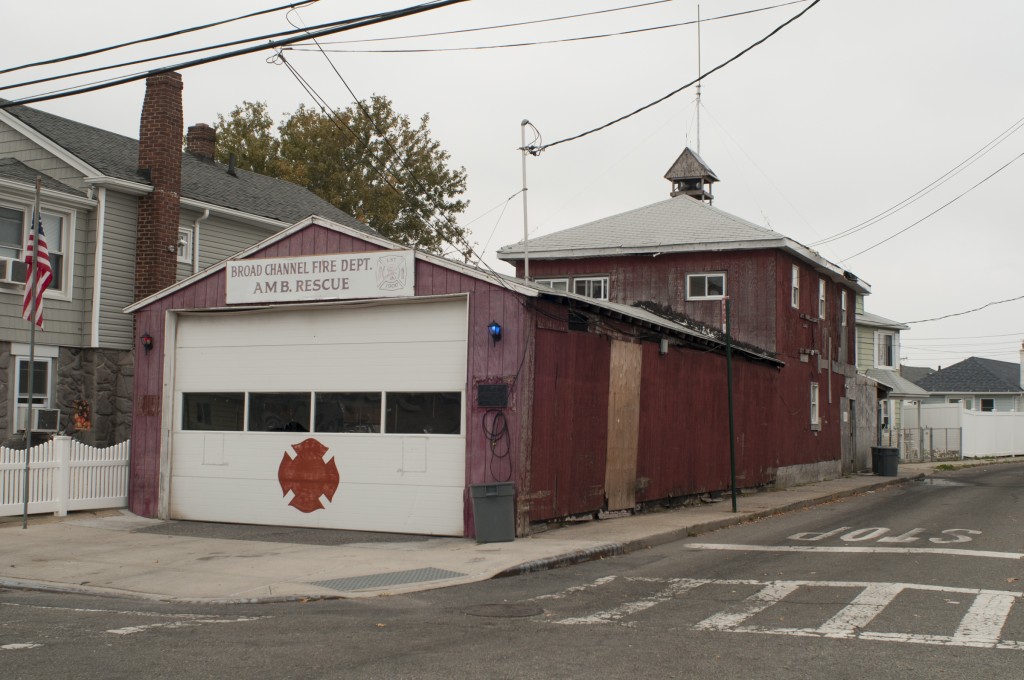
Engine 209 was returning from an alarm during Sandy when debris broke an airline in the undercarriage and disabled it. The crew had to abandon the rig and wade in chest deep water 12 blocks back to the rendezvous point, stopping on the way to help civilians reach higher ground. Water levels would continue to rise, eventually causing an electrical short in the motor and starting a fire. Photos Courtesy Broad Channel Volunteer Fire Dept.
Drive down Noel Road in Broad Channel and you might not see a firehouse. The red building tucked on the corner looks too small to hold two engines and two ambulances, and too old to still be in use, but the sign above the bay doors says Broad Channel Volunteer Fire Department, and so it must be the place.

This was the morning tide before the worst of the storm later that night. The BCVFD had to abandon the firehouse during the height of the storm and move the base of operation to higher ground at the American Legion Hall on Cross Bay Boulevard. This effort, however, was thwarted by the water that destroyed the Hall’s building – and the entire neighborhood.
The current Broad Channel fire station was built in 1905. It was then – and still is – all volunteer, and the only firehouse in the tiny town that is tucked between two bridges. The FDNY firehouses on both sides of the bridges take 911 calls and help with the heavy lifting, but if you are in trouble in town, chances are you are going to meet one of the “volleys”.
That goes double during major storms – when the bridges are closed, the FDNY cannot get in, and everyone staying in town is stuck there.
“We go around in the trucks and make announcements, ‘if you’re going to stay here, against the mayor’s orders, we are here, we got boats, we got trucks, we got ambulances, we will get you out if you need to get out, call us, this is the number,’” says Tracy Moccio, the vice president of the department.
During Hurricane Irene, half the town left for dry ground. For Sandy, only a quarter of the population left despite the mandatory evacuation notice, figuring that the storm would be something similar to Irene – not that bad.
“In Irene, we moved all the gear from bottom shelf and moved it up. It worked out perfectly fine. So [with Sandy], they’re saying its like a real hurricane, we’ll go another shelf up, it can’t go that much higher” is how Moccio described the preparation at the firehouse. In addition, there were sandbags put out and crews put together in the time before the storm.
At the height of the storm, the first two crews that went out to rescue the residents stuck inside their homes by the rising waters couldn’t get back to the station. One of the fire trucks had to be abandoned when the force of the water broke the air brakes, and it later caught on fire from an electrical short. The chief eventually halted operations when it became too dangerous with downed power lines and high tides.
That was only the beginning of the department’s woes. With their equipment ruined and their town destroyed, the BCVFD was in desperate need of help, which started pouring in from all corners. Other departments donated trucks and ambulances, tools and medical supplies. Former members brought socks and coffee and hugs, anything to help.
“Function-wise, we are 20 percent below the level that we were at, because all the tools that we have are on loan to us,” Moccio explained.
“Manpower wise, we are probably 15 times worse than we were before the Sandy,” said Moccio, detailing how eight in-town volunteers left the firehouse after the storm to focus on rebuilding their lives, or because they moved away. New recruits have been inducted, but still need training.
The biggest worry though is that the firehouse will not make it through another storm. The roof is sagging and leaking, the walls are sloping and patched with plywood, and raccoons and squirrels have taken up residence in the ceiling. The department has been trying to build a new firehouse on higher ground in town for 18 years. There was hope that after the storm the new building would become a reality, but so far that is not the case.
“We don’t have the money to fix this building,” said Moccio. The department makes up the majority of its budget through donations, but with everyone in town struggling to rebuild themselves, the fundraising base for the volleys is tapped out.
“We have come a long way, and its because of the town and because of other places that came to our aid when we needed it, but we still have a long way to go. We either have to get that new building built or we need this one fixed.”
Despite these challenges, the volunteers have no intention of leaving the town. They get up in the middle of the night to answer calls, give up holidays with their families to help others, and continue patching together the firehouse, shaking their helmets in the street for spare change or more frequently, a smile and a thank you.
Moccio summed up the attitude of the department, saying “we don’t leave. We don’t leave. We’re not leaving town. This is it, this is our town, and we’re staying here.”
By Kate Bubacz



God bless them!
ReplyDelete